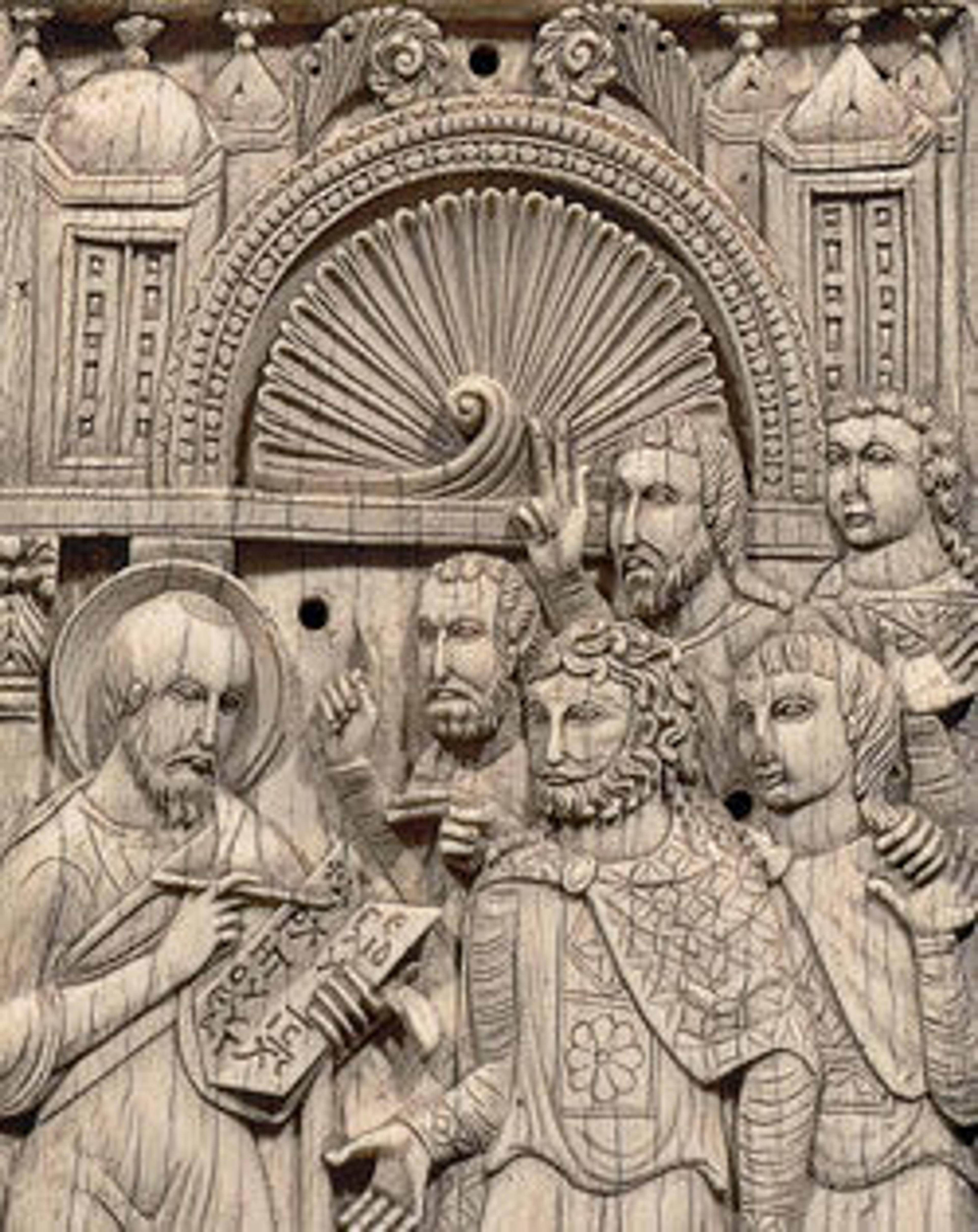Child's Tunic with Hood
Heavy woolen garments such as the example seen here were generally worn as a top layer over a lighter tunic, and hoods offered added protection against heat, cold, or dust. This green wool garment is one of a number of hooded children's tunics that have been preserved. It is ornamented with plain, undyed bands, while its clavi and double sleeve bands are made of purple-colored and undyed wool. The clavi and bands are decorated with a repeating pattern of abstracted, elongated figures intertwined in a vine scroll; they are framed by festoons and dangling leaves. The hemline of the tunic is edged with green fringe. A separately woven hood, also decorated with undyed bands and two roundels, is finished with green fringe along the top and red fringe along the sides.
Artwork Details
- Title:Child's Tunic with Hood
- Date:600–900
- Geography:Attributed to Egypt
- Medium:Tapestry weave in purple-colored, red-brown, and undyed wool on plain-weave ground of green wool; fringes in green and red-brown along the perimeter of the hood and lower edges
- Dimensions:Textile (Including sleeves and hood): L. 35 1/16 in. (89.1 cm)
W. 39 3/4 in. (101 cm)
Mount: H. 42 in. (106.7 cm)
W. 47 1/4 in. (120 cm)
D. 2 5/8 in. (6.7 cm) - Classification:Textiles
- Credit Line:Gift of George D. Pratt, 1927
- Object Number:27.239
- Curatorial Department: Islamic Art
More Artwork
Research Resources
The Met provides unparalleled resources for research and welcomes an international community of students and scholars. The Met's Open Access API is where creators and researchers can connect to the The Met collection. Open Access data and public domain images are available for unrestricted commercial and noncommercial use without permission or fee.
To request images under copyright and other restrictions, please use this Image Request form.
Feedback
We continue to research and examine historical and cultural context for objects in The Met collection. If you have comments or questions about this object record, please contact us using the form below. The Museum looks forward to receiving your comments.
